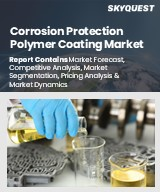
|
시장보고서
상품코드
1500165
세계의 비양성자성 용매 시장 : 세계 산업 규모, 점유율, 동향, 기회, 예측, 제품별, 용도별, 지역별, 경쟁별(2019-2029년)Aprotic Solvents Market - Global Industry Size, Share, Trends, Opportunity, and Forecast, Segmented By Product, By Application, By Region and Competition, 2019-2029F |
||||||
비양성자성 용매 시장 규모는 2023년에 180억 9,000만 달러로 평가되었고 2029년까지 복합 연간 성장률(CAGR) 4.02%로 예측 기간 동안 안정된 성장이 예측되고 있습니다.
비양성자성 용매는 용액에서 수소 원자를 제공하지 않는 중요한 용매의 일종입니다. 이러한 용매는 높은 끓는점과 우수한 용해력과 같은 독특한 특성을 가지며 광범위한 산업 분야에서 필수적입니다. 제약 산업에서 비양성자성 용매는 의약품의 제형화 및 합성에 널리 사용됩니다. 또한 전자 산업에서도 세정, 코팅, 에칭 등의 공정에서 중요한 역할을 하고 있습니다. 또한 비양성자성 용매는 석유 및 가스 산업에 있어서의 추출,정제 공정이나 페인트 및 코팅 산업에 있어서의 다양한 수지나 폴리머의 용해에도 사용되고 있습니다.
| 시장 개요 | |
|---|---|
| 예측 기간 | 2025-2029 |
| 시장 규모 : 2023년 | 180억 9,000만 달러 |
| 시장 규모 : 2029년 | 215억 달러 |
| 복합 연간 성장률(CAGR) : 2024년-2029년 | 4.02% |
| 급성장 부문 | NMP |
| 최대 시장 | 아시아태평양 |
비양성자성 용매 시장은 몇 가지 중요한 요인들에 의해 견인되고 있습니다. 첫째, 석유 및 가스 산업, 특히 채굴,정제 작업에 있어서 수요 증가가 시장의 성장에 기여하고 있습니다. 또한, 약물의 처방 및 합성과 같은 의약 용도에서 비양성자성 용매의 사용 증가가 시장을 더욱 발전시키고 있습니다. 또한, 비양성자성 용매가 세정, 코팅, 에칭 공정에 필수적인 전자제품의 새로운 동향도 시장 확대의 원동력이 되고 있습니다. 마찬가지로, 비양성자성 용매 수요가 증가하고 있는 신흥국에서의 산업화의 진전도 시장의 성장에 박차를 가하고 있습니다. 게다가 이 분야의 지속적인 연구와 혁신은 신제품 개발로 이어져 시장의 성장 가능성을 더욱 높여주고 있습니다.
전망은 밝은 것, 비양성자성 용매 시장에는 과제도 있습니다. 비양성자성 용매의 폐기와 관련된 환경 문제와 그 사용에 대한 엄격한 규정은 시장 성장을 방해할 수 있습니다. 그러나 이 분야에서 진행 중인 R&D 활동은 친환경 비양성자성 용매의 생산에 초점을 맞추어 시장 확대의 새로운 기회를 가져올 수 있습니다. 이러한 환경 친화적 인 대안은 지속가능성에 대한 우려를 해결할뿐만 아니라 산업 전반에서보다 환경 친화적 인 솔루션에 대한 수요가 증가하고 있음에도 부합합니다.
주요 시장 성장 촉진요인
제약 산업에서 비양성자성 용매 수요 증가
페인트 및 코팅 업계에서 비양성자성 용매 수요 증가
주요 시장 과제
원재료 가격 변동
주요 시장 동향
기술 혁신과 기술의 상승
목차
제1장 개요
제2장 조사 방법
제3장 주요 요약
제4장 COVID-19가 세계 비양성자성 용매 시장에 미치는 영향
제5장 세계 비양성자성 용매 시장 전망
- 시장 규모와 예측
- 금액별
- 시정 점유율 및 예측
- 제품별(NMP, 톨루엔, 벤젠, 아세톤, 기타)
- 용도별(석유 및 가스, 의약품, 페인트 및 코팅, 전자 기기, 기타)
- 지역별
- 기업별(2023)
- 시장 맵
제6장 아시아태평양의 비양성자성 용매 시장 전망
- 시장 규모와 예측
- 금액별
- 시정 점유율 및 예측
- 제품별
- 용도별
- 국가별
- 아시아태평양: 국가별 분석
- 중국
- 인도
- 호주
- 일본
- 한국
제7장 유럽의 비양성자성 용매 시장 전망
- 시장 규모와 예측
- 금액별
- 시정 점유율 및 예측
- 제품별
- 용도별
- 국가별
- 유럽: 국가별 분석
- 프랑스
- 독일
- 스페인
- 이탈리아
- 영국
제8장 북미의 비양성자성 용매 시장 전망
- 시장 규모와 예측
- 금액별
- 시정 점유율 및 예측
- 제품별
- 용도별
- 국가별
- 북미: 국가별 분석
- 미국
- 멕시코
- 캐나다
제9장 남미의 비양성자성 용매 시장 전망
- 시장 규모와 예측
- 금액별
- 시정 점유율 및 예측
- 제품별
- 용도별
- 국가별
- 남미 : 국가별 분석
- 브라질
- 아르헨티나
- 콜롬비아
제10장 중동 및 아프리카의 비양성자성 용매 시장 전망
- 시장 규모와 예측
- 금액별
- 시정 점유율 및 예측
- 제품별
- 용도별
- 국가별
- 중동 및 아프리카: 국가별 분석
- 남아프리카
- 사우디아라비아
- 아랍에미리트(UAE)
제11장 시장 역학
- 성장 촉진요인
- 과제
제12장 시장 동향과 발전
- 최근 동향
- 제품상시
- 합병과 인수
제13장 세계 비양성자성 용매 시장 : SWOT 분석
제14장 Porter's Five Forces 분석
- 업계 내 경쟁
- 신규 진입의 가능성
- 공급자의 힘
- 고객의 힘
- 대체품의 위협
제15장 PESTEL 분석
제16장 경쟁 구도
- Eastman Chemical Company
- Ineos AG
- Jilin Oilfield Company
- Asahi Kasei Corp
- AlzChem Group AG
- BASF SE
- DuPont de Nemours Inc.
- Shell International BV
- Imperial Chemical Corporation
- Mitsubishi Chemical Group Corp.
제17장 전략적 제안
제18장 기업 소개와 면책사항
BJH 24.07.04Global Aprotic Solvents Market was valued at USD 18.09 Billion in 2023 and is anticipated to project steady growth in the forecast period with a CAGR of 4.02% through 2029. Aprotic solvents are an important class of solvents that do not donate hydrogen atoms in a solution. These solvents possess unique properties such as high boiling points and excellent dissolving power, which make them indispensable in a wide range of industries. In the pharmaceutical industry, aprotic solvents are extensively used for drug formulation and synthesis. They are also crucial in the electronics industry for processes like cleaning, coating, and etching. Also, aprotic solvents find applications in the oil and gas industry for extraction and refining processes, as well as in the paints and coatings industry for their ability to dissolve various resins and polymers.
| Market Overview | |
|---|---|
| Forecast Period | 2025-2029 |
| Market Size 2023 | USD 18.09 Billion |
| Market Size 2029 | USD 21.50 Billion |
| CAGR 2024-2029 | 4.02% |
| Fastest Growing Segment | NMP |
| Largest Market | Asia Pacific |
The aprotic solvents market is driven by several key factors. Firstly, the growing demand from the oil and gas industries, particularly for extraction and refining operations, is contributing to the market's growth. Additionally, the increased use of aprotic solvents in pharmaceutical applications, such as drug formulation and synthesis, is further propelling the market forward. Moreover, emerging trends in electronics manufacturing, where aprotic solvents are essential for cleaning, coating, and etching processes, are also driving the market's expansion. Likewise, the market's growth is fueled by the increasing industrialization in emerging economies, where the demand for aprotic solvents is on the rise. Additionally, continuous research and innovation in the field are leading to the development of new products, further boosting the market's potential for growth.
Despite the positive outlook, the aprotic solvents market faces certain challenges. Environmental concerns over the disposal of aprotic solvents and stringent regulations regarding their use are potential hindrances to market growth. However, ongoing research and development activities in the field are focused on producing eco-friendly aprotic solvents, which could present new opportunities for market expansion. These environmentally friendly alternatives would not only address the sustainability concerns but also align with the growing demand for greener solutions across industries.
Key Market Drivers
Growing Demand of Aprotic Solvents in Pharmaceutical Industry
Aprotic solvents, characterized by their inability to donate hydrogen bonds, play a crucial role in the formulation of drugs. They serve as an essential ingredient in pharmaceutical manufacturing, aiding in the creation of a wide range of medicinal products.
The pharmaceutical industry's reliance on aprotic solvents stems from these solvents' unique properties. With high boiling points and excellent dissolving power, they enable the efficient synthesis of complex pharmaceutical compounds. Besides, certain aprotic solvents are ideal for use in drug formulation due to their low reactivity, making them safe for use in sensitive pharmaceutical processes.
The global pharmaceutical industry has been experiencing substantial growth, driven by factors such as an aging population, increasing prevalence of chronic diseases, and advancements in medical technology. This growth translates into increased demand for aprotic solvents, as more pharmaceutical production necessitates more of these essential chemicals.
In addition to their established uses, ongoing research and development activities are uncovering new applications for aprotic solvents within the pharmaceutical sector. These emerging applications include drug delivery systems, controlled release formulations, and the efficient synthesis of complex active pharmaceutical ingredients. These advancements are expected to further propel the demand for aprotic solvents, as pharmaceutical companies seek innovative solutions to meet the evolving needs of patients and healthcare providers.
As the pharmaceutical industry continues to evolve, aprotic solvents will remain a critical component in drug formulation and manufacturing. Their unique properties and versatility make them indispensable in the production of safe and effective medicines, ensuring the well-being of individuals worldwide.
Growing Demand of Aprotic Solvents in Paints & Coatings Industry
Aprotic solvents, known for their inability to donate hydrogen bonds, possess remarkable properties that make them indispensable in the formulation of paints and coatings. These solvents exhibit high boiling points and excellent dissolving power, which enable them to effectively dissolve various components in paint formulations.
In the paints and coatings industry, aprotic solvents serve as crucial diluents and additives, playing a vital role in the application of paint and enhancing the finish of coated surfaces. They aid in adjusting the viscosity of paint, ensuring smooth application, and promoting uniform drying, which ultimately results in a flawless and durable coating.
The global paints and coatings industry has been experiencing significant growth, primarily driven by the expanding construction sector, increasing automotive production, and rising demand for protective coating solutions. As a consequence, the demand for aprotic solvents within this industry has witnessed a surge, as these solvents meet the specific requirements of various applications.
Moreover, ongoing research and development activities are continuously uncovering new and exciting uses for aprotic solvents within the paints and coatings sector. These emerging applications, ranging from advanced protective coatings to innovative surface treatments, are expected to further propel the demand for aprotic solvents, contributing to the overall growth of the global aprotic solvents market.
Key Market Challenges
Volatility in Price of Raw Materials
Aprotic solvents, which are crucial in various sectors such as pharmaceuticals, electronics, and paints and coatings, derive their unique properties, such as high boiling points and excellent dissolving power, from carefully selected raw materials. However, the market for aprotic solvents faces potential instability due to the frequent volatility in the prices of these raw materials. Factors such as supply disruptions, pent-up demand, or significant peaks and troughs in the market can all contribute to this uncertainty.
This volatility has far-reaching implications for the profitability and competitiveness of businesses involved in the production of aprotic solvents. For instance, an increase in commodity prices can lead to greater financial instability for companies that heavily rely on these commodities as raw materials for their production processes. This, in turn, can affect the overall stability of aprotic solvent manufacturers, who depend on these commodities for their operations.
Moreover, the cost of raw materials is subject to constant fluctuations, even during "business as usual" periods. In today's world of constant turbulence, this volatility is further exacerbated, posing a significant challenge for manufacturers in the aprotic solvents market.
As a result, industry players must carefully navigate these market dynamics and develop strategies to mitigate the potential risks associated with raw material price volatility. By closely monitoring market trends, establishing robust supply chain management practices, and exploring alternative sourcing options, businesses can enhance their resilience and maintain a competitive edge in the aprotic solvents industry.
Key Market Trends
Rise in Innovation and Technology
Aprotic solvents, recognized for their high boiling points and exceptional dissolving power, play a crucial role in various industries, such as pharmaceuticals, electronics, and paints and coatings. These solvents, with their unique properties, facilitate critical processes and contribute to the development of innovative products and technologies.
In the pharmaceutical industry, aprotic solvents have become indispensable for the formulation of advanced drug delivery systems. Their ability to solubilize and stabilize active pharmaceutical ingredients has opened doors to the development of novel drug formulations, including nano/microencapsulation, liposomal systems, and targeted drug delivery systems. These advancements have revolutionized the field of medicine, offering improved efficacy, controlled release, and enhanced patient compliance.
Moreover, the continuous research and development efforts in aprotic solvents have uncovered new and exciting applications across various sectors. For instance, in the electronics industry, aprotic solvents are utilized in the production of high-performance electronic devices, such as flexible displays and printed circuit boards. The solvents enable the deposition of thin films, the cleaning of electronic components, and the development of advanced materials with superior properties.
However, as the demand for aprotic solvents continues to grow, there are challenges that need to be addressed. Regulatory compliance becomes paramount to ensure the safe handling and disposal of these solvents, minimizing their environmental impact. Additionally, the protection of intellectual property rights and the management of confidential information become vital in an increasingly competitive landscape.
Despite these challenges, the benefits of technological advancements driven by aprotic solvents outweigh the obstacles. The continuous innovation in this field not only fuels the growth of the aprotic solvents market but also drives progress in related industries. With ongoing research and development, we can expect to see further breakthroughs and applications of aprotic solvents that will shape the future of multiple sectors, improving performance, sustainability, and overall efficiency.
Segmental Insights
Product Insights
Based on Product, NMP have emerged as the fastest growing segment in the Global Aprotic Solvents Market in 2023. The extensive application of NMP in the oil & gas industry can be attributed to its remarkable property of dissolving a wide variety of metals, making it an ideal solvent in the Plastic industry as well. This versatile solvent has been steadily gaining popularity and is expected to experience steady growth in revenue during the forecast period. Moreover, it is anticipated due to the consistent demand for NMP from various industries and for a wide range of applications. Its reliability and effectiveness make it a preferred choice among many sectors seeking efficient and effective solutions.
Application Insights
Based on Application, Oil & Gas have emerged as the dominating segment in the Global Aprotic Solvents Market during the forecast period. The ever-increasing global demand for petroleum products, such as gasoline, diesel, and fuel oil, creates a pressing need for refining and extraction processes that are both efficient and sustainable. In this context, aprotic solvents emerge as crucial components, contributing significantly to enhancing the yield and efficiency of these operations. By providing an optimal environment for chemical reactions and facilitating separation processes, aprotic solvents aid in achieving higher product yields while minimizing energy consumption and environmental impact. Their unique properties and versatility make them indispensable in the field of petroleum refining, where every effort is made to optimize the production of valuable fuels and petrochemical derivatives.
Regional Insights
Based on Region, Asia Pacific have emerged as the dominating region in the Global Aprotic Solvents Market in 2023. Revenue from the market in the region is extensively supported by the contribution from developing economies, including India, China, and South Korea. These countries, with their growing economies and expanding consumer bases, have become key players in driving the market's growth. The demand for products from various end-use industries, such as electronics, paints & coatings, and pharmaceuticals, has also played a significant role in fueling the market's expansion in this region.
Moreover, the presence of major paints and coatings companies like Asian Paints and Nippon Paints in the Asia Pacific region has further boosted the market's growth. These industry leaders bring expertise, innovation, and a wide range of products to meet the evolving market demands. Additionally, the region is home to major electronic companies, including Nikon, Samsung, Sony, and Hitachi. With their technological advancements and market dominance, these companies have contributed significantly to the growth and development of the market in the region.
Key Market Players
Eastman Chemical Company
Ineos AG
Jilin Oilfield Company
Asahi Kasei Corp
AlzChem Group AG
BASF SE
DuPont de Nemours Inc.
Shell International B.V.
Imperial Chemical Corporation
Mitsubishi Chemical Group Corp.
Report Scope:
In this report, the Global Aprotic Solvents Market has been segmented into the following categories, in addition to the industry trends which have also been detailed below:
Aprotic Solvents Market, By Product:
-
NMP
Toluene
Benzene
Acetone
Others
Aprotic Solvents Market, By Application:
-
Oil &Gas
Pharmaceuticals
Paints & Coatings
Electronics
Others
Aprotic Solvents Market, By Region:
-
North America
- United States
- Canada
- Mexico
- France
- United Kingdom
- Italy
- Germany
- Spain
- China
- India
- Japan
- Australia
- South Korea
- Brazil
- Argentina
- Colombia
- South Africa
- Saudi Arabia
- UAE
Competitive Landscape
Company Profiles: Detailed analysis of the major companies present in the Global Aprotic Solvents Market.
Available Customizations:
Global Aprotic Solvents Market report with the given market data, Tech Sci Research offers customizations according to a company's specific needs. The following customization options are available for the report:
Company Information
Detailed analysis and profiling of additional market players (up to five).
Table of Contents
1. Product Overview
- 1.1. Market Definition
- 1.2. Scope of the Market
- 1.2.1. Markets Covered
- 1.2.2. Years Considered for Study
- 1.2.3. Key Market Segmentations
2. Research Methodology
- 2.1. Objective of the Study
- 2.2. Baseline Methodology
- 2.3. Key Industry Partners
- 2.4. Major Association and Secondary Sources
- 2.5. Forecasting Methodology
- 2.6. Data Triangulation & Validation
- 2.7. Assumptions and Limitations
3. Executive Summary
- 3.1. Overview of the Market
- 3.2. Overview of Key Market Segmentations
- 3.3. Overview of Key Market Players
- 3.4. Overview of Key Regions/Countries
- 3.5. Overview of Market Drivers, Challenges, Trends
4. Impact of COVID-19 on Global Aprotic Solvents Market
5. Global Aprotic Solvents Market Outlook
- 5.1. Market Size & Forecast
- 5.1.1. By Value
- 5.2. Market Share & Forecast
- 5.2.1. By Product (NMP, Toluene, Benzene, Acetone, Others)
- 5.2.2. By Application (Oil &Gas, Pharmaceuticals, Paints & Coatings, Electronics, Others)
- 5.2.3. By Region
- 5.2.4. By Company (2023)
- 5.3. Market Map
6. Asia Pacific Aprotic Solvents Market Outlook
- 6.1. Market Size & Forecast
- 6.1.1. By Value
- 6.2. Market Share & Forecast
- 6.2.1. By Product
- 6.2.2. By Application
- 6.2.3. By Country
- 6.3. Asia Pacific: Country Analysis
- 6.3.1. China Aprotic Solvents Market Outlook
- 6.3.1.1. Market Size & Forecast
- 6.3.1.1.1. By Value
- 6.3.1.2. Market Share & Forecast
- 6.3.1.2.1. By Product
- 6.3.1.2.2. By Application
- 6.3.1.1. Market Size & Forecast
- 6.3.2. India Aprotic Solvents Market Outlook
- 6.3.2.1. Market Size & Forecast
- 6.3.2.1.1. By Value
- 6.3.2.2. Market Share & Forecast
- 6.3.2.2.1. By Product
- 6.3.2.2.2. By Application
- 6.3.2.1. Market Size & Forecast
- 6.3.3. Australia Aprotic Solvents Market Outlook
- 6.3.3.1. Market Size & Forecast
- 6.3.3.1.1. By Value
- 6.3.3.2. Market Share & Forecast
- 6.3.3.2.1. By Product
- 6.3.3.2.2. By Application
- 6.3.3.1. Market Size & Forecast
- 6.3.4. Japan Aprotic Solvents Market Outlook
- 6.3.4.1. Market Size & Forecast
- 6.3.4.1.1. By Value
- 6.3.4.2. Market Share & Forecast
- 6.3.4.2.1. By Product
- 6.3.4.2.2. By Application
- 6.3.4.1. Market Size & Forecast
- 6.3.5. South Korea Aprotic Solvents Market Outlook
- 6.3.5.1. Market Size & Forecast
- 6.3.5.1.1. By Value
- 6.3.5.2. Market Share & Forecast
- 6.3.5.2.1. By Product
- 6.3.5.2.2. By Application
- 6.3.5.1. Market Size & Forecast
- 6.3.1. China Aprotic Solvents Market Outlook
7. Europe Aprotic Solvents Market Outlook
- 7.1. Market Size & Forecast
- 7.1.1. By Value
- 7.2. Market Share & Forecast
- 7.2.1. By Product
- 7.2.2. By Application
- 7.2.3. By Country
- 7.3. Europe: Country Analysis
- 7.3.1. France Aprotic Solvents Market Outlook
- 7.3.1.1. Market Size & Forecast
- 7.3.1.1.1. By Value
- 7.3.1.2. Market Share & Forecast
- 7.3.1.2.1. By Product
- 7.3.1.2.2. By Application
- 7.3.1.1. Market Size & Forecast
- 7.3.2. Germany Aprotic Solvents Market Outlook
- 7.3.2.1. Market Size & Forecast
- 7.3.2.1.1. By Value
- 7.3.2.2. Market Share & Forecast
- 7.3.2.2.1. By Product
- 7.3.2.2.2. By Application
- 7.3.2.1. Market Size & Forecast
- 7.3.3. Spain Aprotic Solvents Market Outlook
- 7.3.3.1. Market Size & Forecast
- 7.3.3.1.1. By Value
- 7.3.3.2. Market Share & Forecast
- 7.3.3.2.1. By Product
- 7.3.3.2.2. By Application
- 7.3.3.1. Market Size & Forecast
- 7.3.4. Italy Aprotic Solvents Market Outlook
- 7.3.4.1. Market Size & Forecast
- 7.3.4.1.1. By Value
- 7.3.4.2. Market Share & Forecast
- 7.3.4.2.1. By Product
- 7.3.4.2.2. By Application
- 7.3.4.1. Market Size & Forecast
- 7.3.5. United Kingdom Aprotic Solvents Market Outlook
- 7.3.5.1. Market Size & Forecast
- 7.3.5.1.1. By Value
- 7.3.5.2. Market Share & Forecast
- 7.3.5.2.1. By Product
- 7.3.5.2.2. By Application
- 7.3.5.1. Market Size & Forecast
- 7.3.1. France Aprotic Solvents Market Outlook
8. North America Aprotic Solvents Market Outlook
- 8.1. Market Size & Forecast
- 8.1.1. By Value
- 8.2. Market Share & Forecast
- 8.2.1. By Product
- 8.2.2. By Application
- 8.2.3. By Country
- 8.3. North America: Country Analysis
- 8.3.1. United States Aprotic Solvents Market Outlook
- 8.3.1.1. Market Size & Forecast
- 8.3.1.1.1. By Value
- 8.3.1.2. Market Share & Forecast
- 8.3.1.2.1. By Product
- 8.3.1.2.2. By Application
- 8.3.1.1. Market Size & Forecast
- 8.3.2. Mexico Aprotic Solvents Market Outlook
- 8.3.2.1. Market Size & Forecast
- 8.3.2.1.1. By Value
- 8.3.2.2. Market Share & Forecast
- 8.3.2.2.1. By Product
- 8.3.2.2.2. By Application
- 8.3.2.1. Market Size & Forecast
- 8.3.3. Canada Aprotic Solvents Market Outlook
- 8.3.3.1. Market Size & Forecast
- 8.3.3.1.1. By Value
- 8.3.3.2. Market Share & Forecast
- 8.3.3.2.1. By Product
- 8.3.3.2.2. By Application
- 8.3.3.1. Market Size & Forecast
- 8.3.1. United States Aprotic Solvents Market Outlook
9. South America Aprotic Solvents Market Outlook
- 9.1. Market Size & Forecast
- 9.1.1. By Value
- 9.2. Market Share & Forecast
- 9.2.1. By Product
- 9.2.2. By Application
- 9.2.3. By Country
- 9.3. South America: Country Analysis
- 9.3.1. Brazil Aprotic Solvents Market Outlook
- 9.3.1.1. Market Size & Forecast
- 9.3.1.1.1. By Value
- 9.3.1.2. Market Share & Forecast
- 9.3.1.2.1. By Product
- 9.3.1.2.2. By Application
- 9.3.1.1. Market Size & Forecast
- 9.3.2. Argentina Aprotic Solvents Market Outlook
- 9.3.2.1. Market Size & Forecast
- 9.3.2.1.1. By Value
- 9.3.2.2. Market Share & Forecast
- 9.3.2.2.1. By Product
- 9.3.2.2.2. By Application
- 9.3.2.1. Market Size & Forecast
- 9.3.3. Colombia Aprotic Solvents Market Outlook
- 9.3.3.1. Market Size & Forecast
- 9.3.3.1.1. By Value
- 9.3.3.2. Market Share & Forecast
- 9.3.3.2.1. By Product
- 9.3.3.2.2. By Application
- 9.3.3.1. Market Size & Forecast
- 9.3.1. Brazil Aprotic Solvents Market Outlook
10. Middle East and Africa Aprotic Solvents Market Outlook
- 10.1. Market Size & Forecast
- 10.1.1. By Value
- 10.2. Market Share & Forecast
- 10.2.1. By Product
- 10.2.2. By Application
- 10.2.3. By Country
- 10.3. MEA: Country Analysis
- 10.3.1. South Africa Aprotic Solvents Market Outlook
- 10.3.1.1. Market Size & Forecast
- 10.3.1.1.1. By Value
- 10.3.1.2. Market Share & Forecast
- 10.3.1.2.1. By Product
- 10.3.1.2.2. By Application
- 10.3.1.1. Market Size & Forecast
- 10.3.2. Saudi Arabia Aprotic Solvents Market Outlook
- 10.3.2.1. Market Size & Forecast
- 10.3.2.1.1. By Value
- 10.3.2.2. Market Share & Forecast
- 10.3.2.2.1. By Product
- 10.3.2.2.2. By Application
- 10.3.2.1. Market Size & Forecast
- 10.3.3. UAE Aprotic Solvents Market Outlook
- 10.3.3.1. Market Size & Forecast
- 10.3.3.1.1. By Value
- 10.3.3.2. Market Share & Forecast
- 10.3.3.2.1. By Product
- 10.3.3.2.2. By Application
- 10.3.3.1. Market Size & Forecast
- 10.3.1. South Africa Aprotic Solvents Market Outlook
11. Market Dynamics
- 11.1. Drivers
- 11.2. Challenges
12. Market Trends & Developments
- 12.1. Recent Developments
- 12.2. Product Launches
- 12.3. Mergers & Acquisitions
13. Global Aprotic Solvents Market: SWOT Analysis
14. Porter's Five Forces Analysis
- 14.1. Competition in the Industry
- 14.2. Potential of New Entrants
- 14.3. Power of Suppliers
- 14.4. Power of Customers
- 14.5. Threat of Substitute Product
15. PESTLE Analysis
16. Competitive Landscape
- 16.1. Eastman Chemical Company
- 16.1.1. Business Overview
- 16.1.2. Company Snapshot
- 16.1.3. Products & Services
- 16.1.4. Financials (As Reported)
- 16.1.5. Recent Developments
- 16.2. Ineos AG
- 16.3. Jilin Oilfield Company
- 16.4. Asahi Kasei Corp
- 16.5. AlzChem Group AG
- 16.6. BASF SE
- 16.7. DuPont de Nemours Inc.
- 16.8. Shell International B.V.
- 16.9. Imperial Chemical Corporation
- 16.10. Mitsubishi Chemical Group Corp.
17. Strategic Recommendations
18. About Us & Disclaimer
(주말 및 공휴일 제외)


















